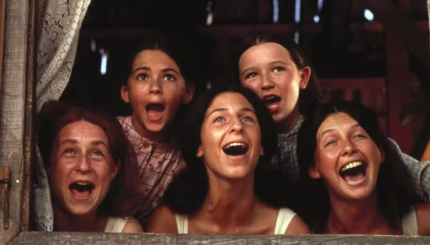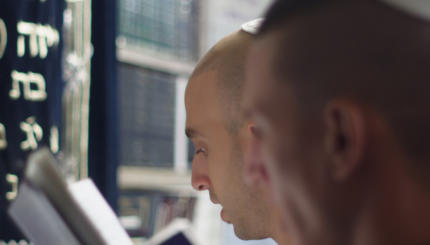In some ways, liturgy translates the Hebrew term avodah עבודה, which means worship (or work). Liturgy is, broadly, a description of the drama of worshipping God. Liturgy is not just the words that are recited, whether fixed or spontaneous, it also includes the actions, the occasions for the worship, and the gathering of the participants. Liturgy is in some ways akin to a screenplay, but just as screenplays have differing degrees of flexibility in the hands of different directors, so do different liturgical moments.
Types of Liturgy
Judaism has a broad range of liturgy: Worship in formal prayer in a synagogue at one of the appointed times with a quorum of at least ten adults (a minyan) is only one kind of Jewish liturgical expression, and it is not even the most common. The most common liturgical moments are the occasional blessings that a person recites upon performing certain commandments, or mitzvot (Birkot Mitzvah), or on eating, or on experiencing some wondrous aspect of nature (Birkot haNehenin). Rituals such as wedding ceremonies, the Passover seder, ritual circumcisions, and putting up a mezuzah (the box containing selections from the Torah) on a doorpost of a new home, are all liturgical activities that have their own choreography and texts.
The Challenge of Liturgy
The basic challenge of liturgy is that, on the one hand, we expect conversation with God to be intimate and real and spontaneous, as one might speak with a parent; on the other hand, we approach God with the images of royalty, and royalty has a defined protocol. Jewish law defines a requirement of three daily prayers with set liturgies, and it is very difficult to be spontaneous on a schedule with a familiar text. Through our history, Jewish liturgy has swung back and forth between these poles of the spontaneous and occasional (kavvanah, or true intention) versus the fixed and routinized (keva, or fixed and established). On the side of keva are the established texts that have been used for centuries: the for daily prayer, the machzor for prayer on the High Holidays, the haggadah for the ritual of the Passover (the ritual meal on the first night or nights of Passover). On the kavvanah side are the new siddurim, machzorim, and haggadot (as they are known in their plural forms) that are continually published, along with the new commentaries, poetry, and melodies that are designed to accompany them, and the entire area of private, personal prayer.
Compare Jewish liturgy to producing music. Different musicians can play identical notes off of the same sheet music, but produce startlingly different musical experiences. Alternatively, some musicians would not consider a piece of music “their own” without adding their own embellishments. And some musicians can take a short melody and produce an entire performance. Similarly, some Jews can personalize the traditional texts of the liturgy simply by focusing their own associations and emphases differently, while others need to modify the prayers in different ways in order to “own” the experience.

Help us keep Jewish knowledge accessible to millions of people around the world.
Your donation to My Jewish Learning fuels endless journeys of Jewish discovery. With your help, My Jewish Learning can continue to provide nonstop opportunities for learning, connection and growth.
Making Liturgy Relevant Today
How does one make an ancient liturgical text “new and relevant”? Until modern times, each generation would supplement the traditional text; occasionally, materials would drop out, but the overall works grew. In modern times, editors subtract, add, and substitute, sometimes creating new materials and sometimes restoring materials “lost” to tradition. Prayer texts have changed as a result of differing theological concerns, especially as regards the relationship of the Jewish people to other peoples. The use of gender-specific language, both for God and for referring to people, is an issue that has informed the editing of some contemporary siddurim. Finally, new liturgical texts have been published that include modern commentaries or different aesthetic changes that make the texts more user-friendly.
Learning about Jewish liturgy can provide tremendous insight into how Judaism thinks about all kinds of issues, but liturgy is really about engaging God. Learning about the texts is only the first step.
Explore the deeper side of Jewish prayer. Sign up for our weekly email newsletter exploring individual prayers in Jewish liturgy.



